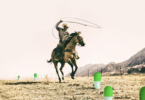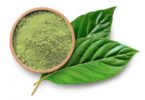http://acsh.org/news/2016/11/28/kratom-when-laws-collide-10494

Kratom, which I once satirically referred to a “The Supplement That Will Kill Godzilla,” will, in fact, not kill Godzilla. Nor is it a supplement (1).It is by any definition, a drug. As such, it should be treated like one.
The drug (actually a mixture of dozens of drugs), has been squarely in the news lately because of two reasons. First, it is being seized by the DEA, which has at this time classified it as a Schedule I substance—no legal use in the US and a high potential for abuse. Second, although anecdotal, there are indications that it may be useful in relieving pain—something that will become increasingly important as the CDC and DEA continue to tighten the “opioid noose” on both drug abusers and patients who have legitimate need for severe pain relief.
The failure to distinguish between the two—users and abusers—could fairly be called “govern-medical malpractice,” and is a result of a misguided, clumsy attempt to tackle the opioid overdose epidemic in the US by restricting access of strong pain medications to people who need them. The premise here is that such restrictions would (theoretically) prevent addiction in patients with legitimate needs, and save the lives of people who already addicted. Somehow, this policy has managed to harm both groups.
So, I find myself both for and against kratom, but for different reasons.
- The government’s Stalin-like war against opioid pills is already making life immeasurably worse for many people, and this is just getting started. It will get worse.
- CDC advice to manage pain with NSAIDs, and Tylenol is medically naive. Many people cannot take Advil or other NSAIDs, and Tylenol is essentially useless, and dangerous.
- Since the 1890s, when both aspirin and heroin were invented, there has been very little progress against pain. Any new therapy, such as kratom that would might treat pain in a different way would be an enormous medical advance. It needs to be explored.
- But, kratom sales should not be permitted in vitamin stores. There have been serious adverse reactions reported, but the number of bad reactions is largely immaterial. Kratom, no matter how good it is, should not be sold in stores like GNC. Arguably, nothing should be.
- Why? If you cannot waltz into a a “vitamin store” and buy Lipitor, buy Prozac online, amoxicillin, or Vicodin without a prescription, you should not be able to buy kratom without one.
- Kratom isn’t even one drug. It is a mixture of dozens of chemicals, a number of which are known to be pharmacologically active. These have not been tested for safety and efficacy. Some of the chemicals in kratom bind at the same receptors as do opioids, although this does not necessarily meant that it acts like morphine or codeine.
- The DEA lists kratom (and marijuana) as Schedule I drugs—those with no legal medical use and a high potential for abuse.
- The DEA is nuts.
- While kilo after kilo of heroin and fentanyl—REALLY deadly drugs—are pouring across our border from Mexico, research labs are forbidden from even getting a small supply of kratom or marijuana to study??? This is simply crazy. Compared to the death and destruction that nonprescription narcotics are doing every day, banning kratom and marijuana from being used for research purposes is like polishing the doorknobs on the the Titanic.
A group of osteopaths (2) has weighed in about the drug in a new report in The Journal of the American Osteopathic Association, which was written by Walter C. Prozialeck, PhD. The article raises some interesting points, but also contains a number of fundamental errors:
“We also reported on the pharmacologically active constituents of kratom, most notably mitragynine, 7-hydroxymitragynine, paynantheine, and speciogynine, along with more than 20 other substances.”
Comment: “20 other substances” is a real problem. Are any of them toxic, addictive, carcinogenic? No one knows.
“We noted an increase in the number of reported adverse effects attributed to kratom and highlighted the lack of regulation and quality-control measures in the production and sale of kratom products.”
Comment: Hold on. Prozialeck is blaming increased adverse events on the lack of regulation of something that is neither legal, nor has even been tested for safety? How can there be quality control when you don’t even know what drugs are present?
“Over the years, kratom has been regulated as an herbal product under US Food and Drug Administration and DEA policies.”
Comment; Pure insanity. This is not parsley, and it doesn’t “supplement” anything. It is a collection of drugs. The fact that it happens to be considered an “herb” is irrelevant. Poison ivy is an herb. It does not matter where a drug comes from.
“Would institutional review boards be reluctant to approve trials for a schedule 1 substance?”
Comment: Now there’s a good question—one that would not need to be asked if the DEA woke up.
“If kratom contains pharmacologically active compounds (which it clearly does), it would certainly have potential toxicities.”
Comment: Show me a drug that doesn’t. This is what pre-clinical toxicology studies and clinical trials are for.
“After evaluating the literature, I can reach no other conclusion than, in pure herbal form, when taken at moderate doses of less than 10 to 15 g, pure leaf kratom appears to be relatively benign in the vast majority of users.”
Comment: That would be great. But until it is tested, this is pure speculation.
“Without reported evidence, however, it would not be appropriate for physicians to recommend kratom for their patients.”
Comment: No it wouldn’t. So, please tell me why you should be able to buy it in a vitamin store if it is too dangerous to be prescribed.
“The only way kratom can be unequivocally studied is through well-controlled clinical trials in humans.”
Comment: Perfectly correct.
“Who would fund this type of study? Given that kratom is a tree, would pharmaceutical companies support such work?” (3)
Comment; Why not? The tree part is complete nonsense—something Prozialeck should know. The cancer drug paclitaxel was originally isolated from the Pacific Yew tree (4). Between 2006-2012, paclitaxel had global sales of $3.7 billion. Bristol-Myers Squibb had no problem starting with a tree and turning it into one of the World Health Organization’s List of Essential Medicines.
Conclusions:
- Kratom research could and should be done, but the DEA is putting up a preposterous barrier, which could keep this from happening.
- But, it should not be sold in GNC. It is not a harmless herb. And doesn’t matter whether it’s an herb or not. Herbs as a class are neither safe nor unsafe.
- Although it is illegal, and being seized, I cannot say that I would not try it myself if I were in severe pain and could not find a doctor to give me the drugs so that I need not live my life in misery. The fact that government policies are forcing otherwise law abiding citizens to turn to illegal, untested drugs for pain relief is all the evidence I need that the policies are idiotic.
This is government at its worst. The left hand does know what the right hand is doing, but is actually fighting it.
Fighting causes pain. We don’t need more.
Notes:
(1) Please tell me anything in kratom that supplements what is missing in your diet. Don’t bother. Even though it does not, officially, it still does, thanks to the nonsensical 1994 DSHEA.
(2) Osteopaths, aka, doctors of osteopathy, despite sounding like “naturopaths” receive the same medical training (and then extra in osteopathy) as any other doctor. They have full medical and hospital privileges. They can be emergency room doctors, surgeons, or infectious disease specialist. Like doctors, they cannot be lumped together. Some are good, and some are not.
(3) Some people argue that the 10 years that it would take to test and develop kratom is too long, and the drug should be granted special dispensation. I don’t buy it. All other drugs must navigate this path. Why the exception here?
(4) There are not enough Pacific Yews in the world to provide even a fraction of the paclitaxel that is needed. The drug is now made by extracting a similar chemical from a more common Yew, and then synthetically converting it to the actual drug.








